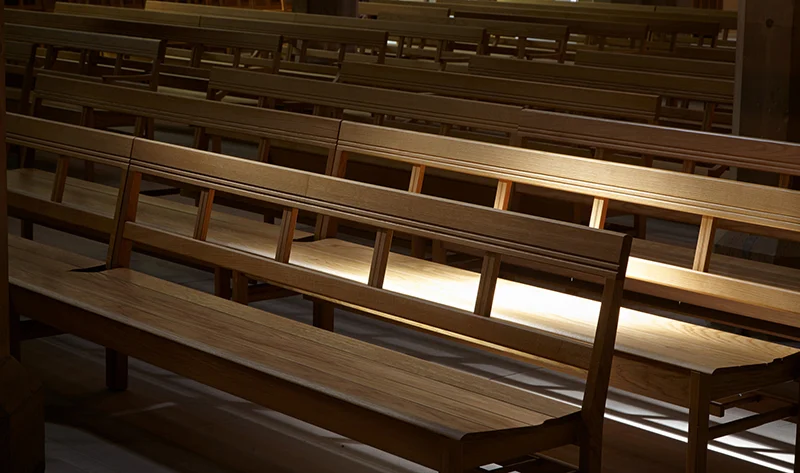Church pews are a ubiquitous element in Christian worship spaces, embodying both functional and symbolic roles. From their origins in early Christianity to their modern-day manifestations, pews have evolved significantly, reflecting changes in liturgical practices, architectural styles, and social norms. This article explores the history, design, and cultural significance of church pew seats.
Historical Overview
Early Christian Worship and the Advent of Pews
In the early days of Christianity, congregations often met in private homes, catacombs, or simple structures where seating was rudimentary or nonexistent. Worshippers stood during services, which reflected the early church's emphasis on communal and participatory worship. The introduction of formal seating, specifically pews, began in the medieval period.
Medieval Period
The earliest forms of pews appeared in the 13th century in European churches. These were simple benches or stone seats along the walls of the nave, initially reserved for the elderly or infirm. As the church’s influence grew and services became longer and more structured, the need for more permanent and comfortable seating became apparent.
Renaissance and Reformation
During the Renaissance, the design of church interiors, including pews, became more elaborate. Carved wooden pews with intricate designs and high backs were introduced. The Reformation in the 16th century brought significant changes to church practices, including the layout of worship spaces. Protestant churches, particularly in Northern Europe, emphasized the importance of preaching, leading to a reorganization of church interiors with pews arranged to focus on the pulpit.
17th to 19th Century
By the 17th century, pews were standard in most European churches and were being introduced in the American colonies. In many cases, families purchased or rented pews, which were often enclosed with doors. This practice reflected the social hierarchy of the congregation. The 18th and 19th centuries saw pews become more uniform and democratic, reflecting broader social changes.
Design and Architecture
Materials and Construction
Church pews are typically constructed from wood, chosen for its durability and ease of carving. Common woods include oak, pine, and mahogany. The construction of pews involves joinery techniques that ensure strength and longevity, with attention to the ergonomic design to accommodate long periods of sitting.
Styles and Variations
Pew designs vary widely, influenced by regional architectural styles and the denominational preferences of the church. Some common styles include:
- Gothic Pews: Featuring pointed arches and intricate tracery, Gothic pews are often found in churches with Gothic Revival architecture.
- Colonial Pews: Simpler and more utilitarian, these pews reflect the practical and modest design preferences of early American colonists.
- Modern Pews: Contemporary churches may opt for minimalist designs, often incorporating cushioned seats and backs for comfort.
Ornamental Features
Pews often feature decorative elements that enhance the aesthetic appeal of the church interior. Common ornamental features include:
- Carvings: Floral motifs, biblical scenes, and symbolic imagery are often carved into the pew ends and backs.
- Upholstery: In some churches, pews are upholstered with fabric or leather for added comfort and visual appeal.
- Inscriptions: Donor names, memorial dedications, and scripture verses may be inscribed on pews.
Cultural and Social Significance
The Pew and Social Hierarchy
Historically, the location and ownership of pews reflected the social hierarchy within the congregation. Wealthier families often had reserved pews in prominent locations, while poorer members sat in less desirable areas. This practice underscored the social stratification of the time and highlighted the intersection of religion and social status.
The Pew in Contemporary Worship
Today, pews serve as a symbol of communal worship, providing a sense of unity and shared experience. In many denominations, the traditional pew arrangement fosters a sense of equality, with all members of the congregation facing the altar or pulpit together.
The Role of Pews in Modern Church Design
Modern church design often seeks to balance tradition with contemporary needs. While some new churches opt for flexible seating arrangements with chairs that can be reconfigured, many retain pews for their historical and symbolic significance. The design of modern pews often incorporates ergonomic considerations to enhance comfort during longer services.
Church pews are more than just functional seating; they are steeped in history, cultural significance, and artistic expression. From their origins in early Christian worship to their varied designs in contemporary churches, pews reflect the evolving nature of Christian liturgy and the communal experience of worship. Whether simple or ornate, traditional or modern, church pews continue to play a crucial role in the life of congregations around the world.




